
Dressing table attributed to Christopher Townsend, Newport, Rhode Island, ca. 1745. Mahogany with tulip poplar. H. 29 3/4", W. 34 1/8", D. 20 1/2". (Private collection; photo, Gavin Ashworth.)
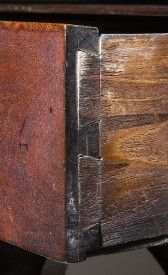
Detail of the drawer dovetailing of the dressing table illustrated in fig. 1. (Photo, Gavin Ashworth.)
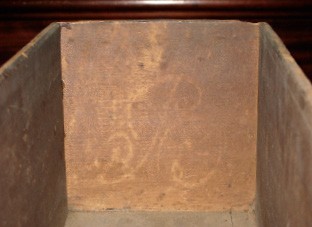
Detail of the B inscribed on a drawer of the dressing table illustrated in fig.1. (Photo, Erik Gronning.)
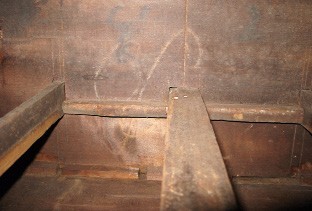
Detail of the B inscribed on interior of the case of the dressing table illustrated in fig. 1. (Photo, Erik Gronning.)
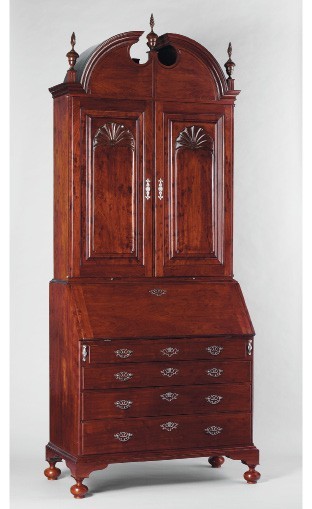
Christopher Townsend, desk-and-bookcase, Newport, Rhode Island, ca. 1750. Mahogany. (Private collection; photo © Metropolitan Museum of Art.)
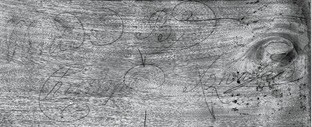
Detail of the inscription “Made by Christopher Townsend” on the desk-and-bookcase illustrated in fig. 5. (Photo, Charlotte Hale, Sherman Fairchild Paintings Conservation Center, Metropolitan Museum of Art; image © Metropolitan Museum of Art.)

Detail of the B inscribed on the high chest originally owned by Governor Gideon Wanton. (Photo, Erik Gronning.)
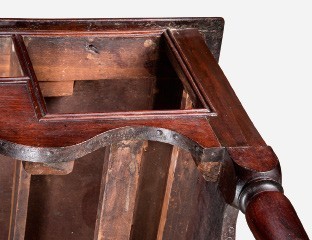
Detail of the underside of the skirt of the dressing table illustrated in fig. 1. (Photo, Gavin Ashworth.)
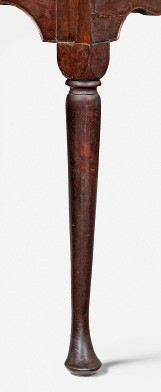
Detail of the leg of the dressing table illustrated in fig. 1. (Photo, Gavin Ashworth.)
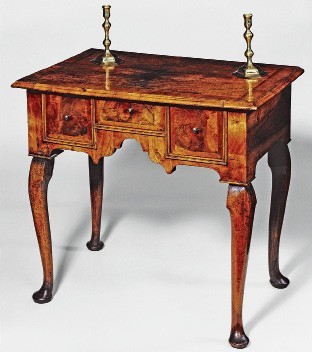
Dressing table, England, 1715–1730. Walnut, oak, and deal. (Photo, Apter-Fredericks.)
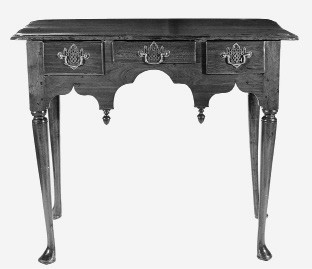
Dressing table, southeastern Virginia, 1735–1745. Walnut with yellow pine and tulip poplar. H. 28 3/16", W. 33 1/8", D. 19 1/4". (Private collection; photo, Museum of Early Southern Decorative Arts.)
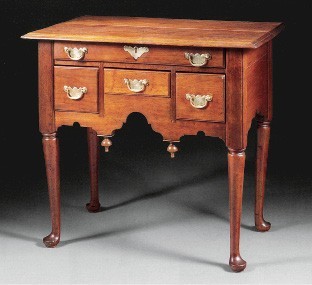
Dressing table, New Jersey, 1740–1760. Walnut. H. 30 5/8", W. 34 1/2", D. 20 1/2". (Courtesy, Christie’s.)
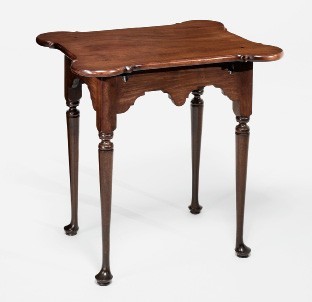
Tea table, Newport, Rhode Island, ca. 1750. Mahogany. H. 25 1/2", W. 25 1/4", D. 21". (Courtesy, Sotheby’s.)
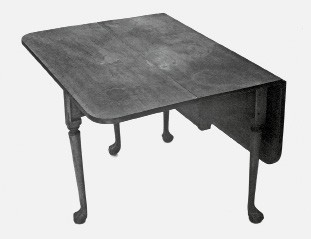
Drop-leaf table, Woodbury, Connecticut, 1760–1780. Cherry. H. 26 3/4";
40 1/8" x 36 1/2" (open). (Private collection; photo, Edward S. Cooke Jr., Fiddlebacks and Crooked-backs: Elijah Booth and Other Joiners in Newtown and Woodbury, 1750–1820 [Waterbury, Conn.: Mattatuck Historical Society, 1982], fig. 21.)
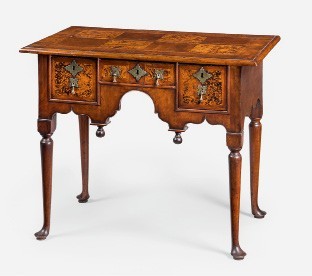
Dressing table, probably Newport, Rhode Island, 1730–1740. Walnut with white pine and poplar. H. 28 7/8", W. 34 3/4", D. 21 1/8". (Lyman Allyn Art Museum; photo, Gavin Ashworth.)
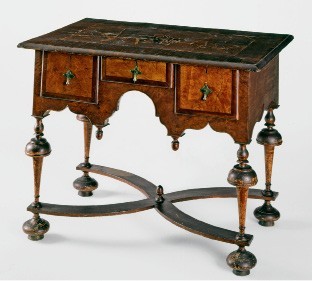
Dressing table, Newport or East Greenwich, Rhode Island, 1705–1735. Maple, maple veneer, and walnut with white pine. H. 28 1/2", W. 35 1/2", D. 23 1/4". (Private collection; photo, Gavin Ashworth.)
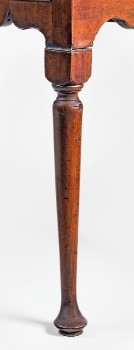
Detail of the leg of the dressing table illustrated in fig. 15. (Photo, Gavin Ashworth.)

Detail of the leg square and case of the dressing table illustrated in fig. 15. (Photo, Erik Gronning.)
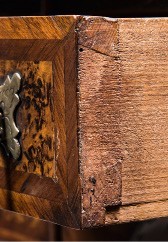
Detail of the drawer dovetailing of the dressing table illustrated in fig. 15. (Photo, Gavin Ashworth.)
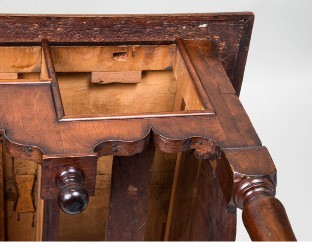
Detail of the underside of the dressing table illustrated in fig. 15. (Photo, Gavin Ashworth.)

Detail of the chalk marking on a drawer of the dressing table illustrated in fig. 15. (Photo, Erik Gronning.)

Detail of a chalk mark on the back of the dressing table illustrated in fig. 15. (Photo, Erik Gronning.)
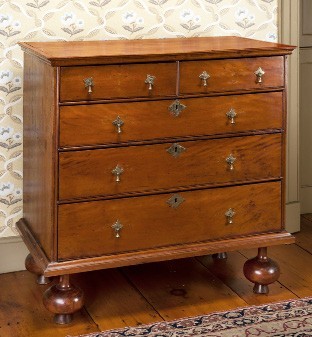
Chest of drawers, Newport, Rhode Island, 1715–1735. Maple. H. 37 1/4", W. 36 3/4", D. 20". (Courtesy, Whitehorne House Museum, Newport Restoration Foundation.)

Detail of a chalk mark on the exterior back of a drawer of the chest of drawers illustrated in fig. 23. (Art & Industry in Early America: Rhode Island Furniture, 1650–1830, edited by Patricia E. Kane et al. [New Haven, Conn.: Yale University Art Gallery, 2016)], p. 448, fig. 8.)
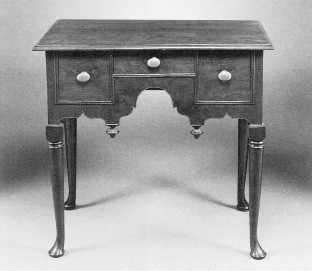
Dressing table, Newport, Rhode Island, ca. 1740. Walnut. H. 30", W. 33 3/4", D. 20 1/2". (Courtesy, Sotheby’s.)

Dressing table, Newport, Rhode Island, ca. 1740. Walnut with maple. H. 30", W. 33", D. 21". (Photo reproduced from Wallace Nutting, Furniture Treasury, vol. 1 [New York: MacMillan Company, 1948], no. 398.)
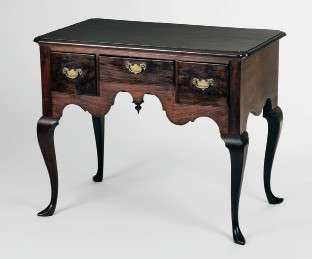
Dressing table, attributed to Christopher Townsend, Newport, Rhode Island, ca. 1750. Mahogany with maple and yellow poplar. H. 30 1/4", W. 36", D. 22". (Chipstone Foundation; photo, Christie’s.)

Detail of the drawer dovetails of the dressing table illustrated in fig. 27. Photo, Robb Quinn.)
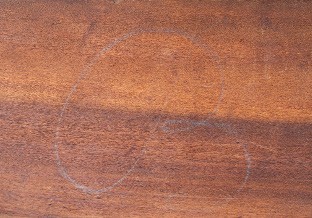
Detail of the B inscribed on the back of a drawer of the dressing table illustrated in fig. 27. (Photo, Jonathan Prown.)

Detail of the glue blocks securing a leg of the dressing table illustrated in fig. 27. (Photo, Robb Quinn.)
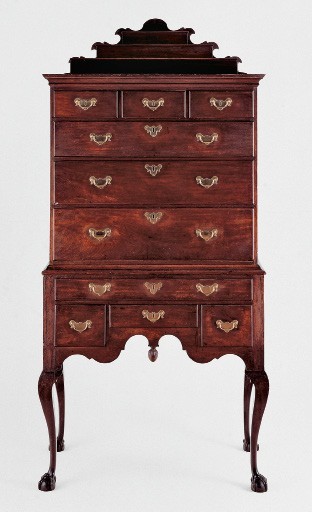
Christopher Townsend and John Townsend, high chest of drawers, Newport, Rhode Island, ca. 1755. Mahogany with white pine and yellow poplar. H. 83 5/8", W. 40 1/2", D. 22 1/4". (Chipstone Foundation; photo, Gavin Ashworth.) The chest retains its original cast brass hardware and finish.
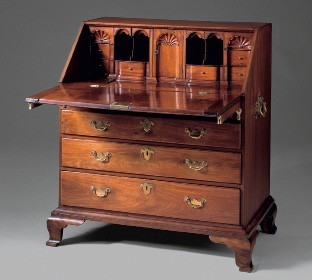
Desk, attributed to Christopher Townsend, Newport, Rhode Island, ca. 1750. Mahogany with tulip poplar, chestnut, cereal, and white pine. H. 42", W. 36 1/2", D. 22". (Private collection; photo, Sotheby’s.)
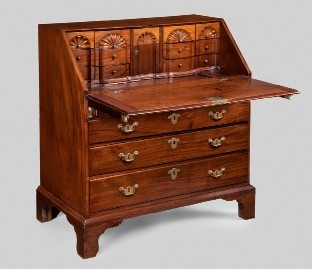
Desk, attributed to Christopher Townsend, Newport, Rhode Island, 1748. Mahogany with mahogany, poplar, birchwood, and cedar. H. 41 3/4", W. 38 1/8", D. 22 1/2". (Private collection; photo, Gavin Ashworth.)
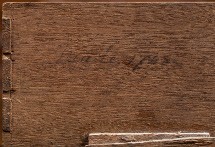
Detail of the inscription “Made 1748” on the desk illustrated in fig. 33. (Photo, Gavin Ashworth.)
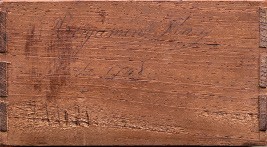
Detail of the inscription “Benjamin Almy | Made 1748” on the desk illustrated in fig. 33. (Photo, Gavin Ashworth.)
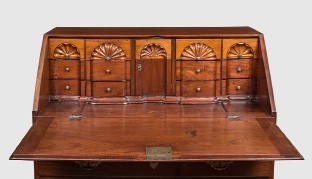
Detail of the interior of the desk illustrated in fig. 33. (Photo, Gavin Ashworth.)
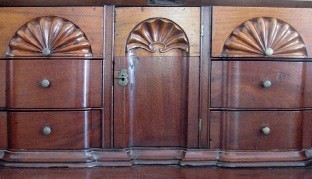
Detail of the prospect door of the desk illustrated in fig. 33. (Photo, Erik Gronning.)

Detail of the left sliding lock of the top long drawer of the desk illustrated in fig. 33. (Photo, Gavin Ashworth.)
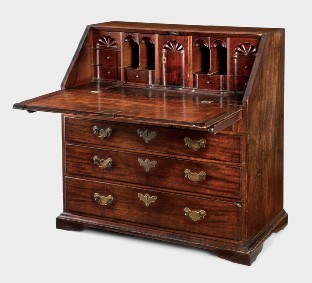
Christopher Townsend, desk, Newport, Rhode Island, ca. 1750. Mahogany, cedrela, and tulip poplar. H. 37 1/4", W. 35 5/8", D. 20 1/4". (Private collection; photo, Gavin Ashworth.)
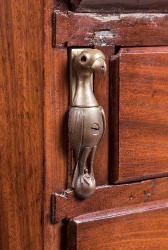
Detail of the brass mount on the left fallboard support of the desk illustrated in fig. 33. (Photo, Gavin Ashworth.)
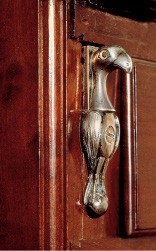
Detail of the silver mount on the left fallboard support of the desk-and-bookcase illustrated in fig. 5. (Courtesy, Sotheby’s.)
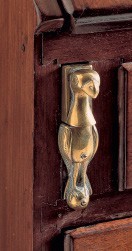
Detail of the brass mount on the left fallboard support of the desk illustrated in fig. 32. (Courtesy, Sotheby’s.)
